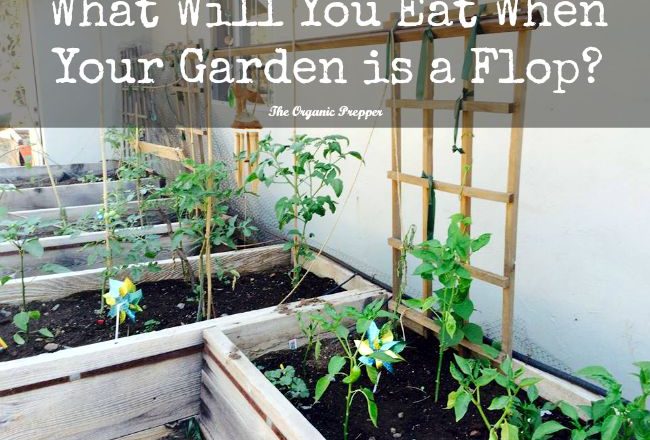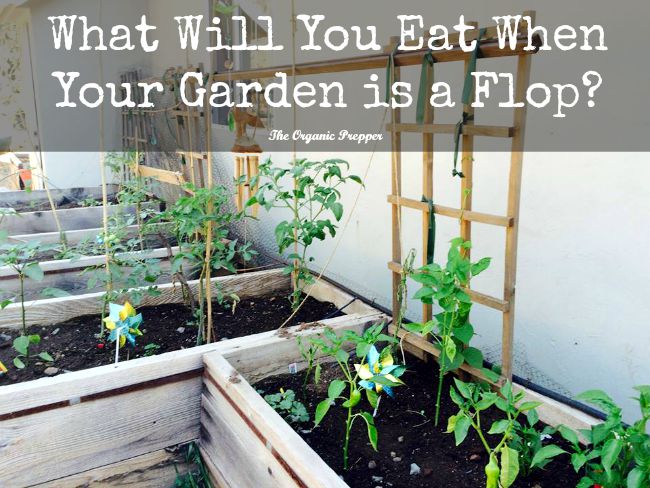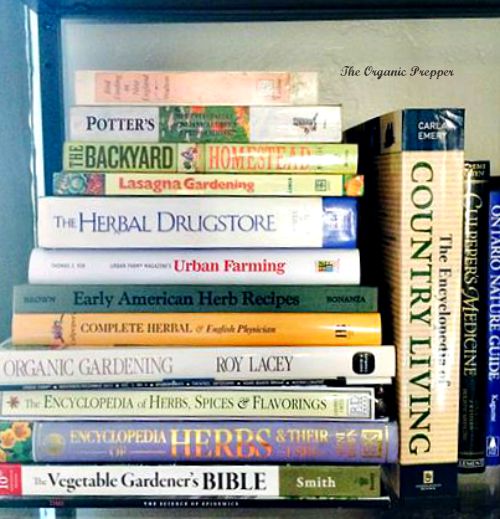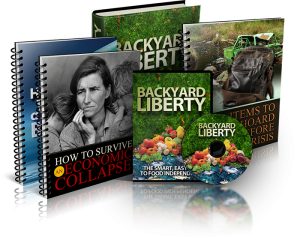I love growing my own vegetables. I spend many fulfilling hours outside every summer, tending to my plants, nurturing my soil, and babying things along, with the birds for music and a basket full of delicious organic food to show for it each day.
Except this year. This year, my garden is a flop.
Eaten by deer, killed by the heat
It’s pretty embarrassing to admit on my own website that my garden is not doing diddly squat this year. I am normally pretty good at growing food (or just extraordinarily lucky) but this year, circumstances beyond my control have thrown up one challenge after another. First of all, we moved July 1. I started my garden in containers, earlier in the summer, and then transplanted them into my lovely new fenced garden full of raised beds.
Only, the fences weren’t high enough, and unbeknownst to me, I had set up a deer buffet with a low hurdle. Garden #1, GONE. Decimated. Wiped out. And I didn’t even get venison in retribution.
So, I went and got some new plants and put them in. Better late than never. I deer-proofed and nurtured my soil and paid top dollar for plants that were a bit more advanced, since by now it was the first week of July.
And then a heatwave hit the day after I transplanted them. 107 degrees. Most of the plants withered immediately and no amount of TLC would bring them back.
I was determined that I would have at least SOME vegetables and bought even more plants. I added some shadecloth to protect them from the sun. I fed them some white sugar to help them recover from the transplant shock. They’re growing but not providing me with a whole lot of produce, for numerous reasons, including heat, a late timeline, and slightly low phosphorus in my soil.
Aggravating. I’m a wannabe farmer shopping at the farmer’s market to get my summer veggies. Not cool.
But, like everything in life, there’s a lesson here. It got me thinking about all of the folks whose master plan for survival is a big stockpile of seeds. While this is a very important part of a long-term self-reliance plan, there are some years, no matter how many silver bells and cockleshells you put out, your contrary garden just won’t grow.
It’s going to happen. One year, your gardening season is not going to live up to your expectations. Have you thought about what you’ll eat when your garden flops?
Troubleshooting a garden that is dying
I’ve written a lot about adaptability as a survival mechanism and this holds true with your vegetable garden as well. When a major part of your survival plan is growing your own food, being able to identify and overcome issues with your plan is vital.
Experience. The number one key to troubleshooting your iffy garden is experience. Many people make a survival plan without any practical skills to back it up. Have you gardened before? Have you gardened in the area in which you intend to survive? If you haven’t, you aren’t going to be able to predict the pitfalls, like deer fencing that isn’t high enough, too much direct afternoon sun, not enough direct afternoon sun, etc. This is the major reason for my gardening failure this year. All of this stuff is learned by (often painful) experience. Keep a gardening journal to help avoid repeating those mistakes and to keep track of trends, like late frosts, etc. So get out there and get dirty. No excuses. If you don’t do it now, you can’t expect to survive doing it.
Soil testing. A huge part of successful gardening happens before you ever plant a seed. You need to know all about your soil so that you can amend it and provide the right foundation for growing. It’s best if you amend before planting but you can still have some success after the fact. Every bit as important as your seeds is a soil-testing kit. Get a kit that tests for soil pH, nitrogen, phosphorus and potash content. I like this kit because it has 10 tests for each substance. The price is very reasonable (it’s geared towards classroom instruction) so get a few for your stockpile. This way, if the S hits the F, you can still have access to the science that you need to troubleshoot successfully.
Soil Amendments. Once you’ve done your testing, you will need the supplies to amend your soil to optimum nutrient levels. Find some books on DIY soil amendments and stock up on supplies that you might need to adjust where your oil is lacking. If your goal is gardening for survival, it’s very important to learn to amend your soil without a trip to the garden store. For example, blossom end rot is caused by a lack of calcium in the soil. This can be improved by adding milk to the roots of your plants, then deeply watering them, or making a tea from crushed eggshells. Learn about the safe management of manure, composting, and the use of cover crops.
Access to information. Right now, we have the luxury of the internet. With the help of Google and YouTube, we can find the answers to nearly any gardening question we might have. But in a long-term survival situation, it won’t be that easy. It’s almost a guarantee that if you are in a scenario during which your vegetable garden is all that stands between you and malnutrition, you aren’t going to have access to the internet.
My bookcase is loaded with reference books on topics like gardening, herbalism, and other old-fashioned skills. Join me by going old school. Get yourself some well-reviewed gardening books. These are some of my very favorites:
- The Vegetable Gardener’s Bible
- The Encyclopedia of Country Living
- Trowel and Error: Over 700 Tips, Remedies and Shortcuts for the Gardener
- The Organic Gardener’s Handbook of Natural Pest and Disease Control
- Rodale’s Ultimate Encyclopedia of Organic Gardening
Also, check out the highlighted links in the soil amendment section above for more excellent books. (Some of them are available for free on Amazon’s Kindle Unlimited program, but I strongly recommed hard copies of books that you find useful.)
What to do when you can’t grow your own food
While my plan is to eventually be able to grow much of what we need for survival, I’m also prepared for a bad year. While the items above will help you through many gardening issues, there are some things that are completely beyond human control. Things like:
- Bad weather, either too hot, too cold, to rainy, or too dry
- Pests – who remembers that book in the Little House series where Pa’s fields were descended upon by a horde of hungry locusts?
- Natural disasters – wildfires, terrible storms, tornadoes – all of those can wipe out a garden
There’s absolutely nothing you can do about certain events. And that’s why you must have a Plan B. A stockpile of long-term food is essential for surviving when the deck is stacked against you.
There are numerous different ways to go about building your food supply (which I go over in my book, The Pantry Primer), but the basics are:
- Shopping the sales
- Using coupons
- Storing your food properly
- Using safe home preservation methods
- Buying in bulk quantities
- Storing freeze dried food in #10 cans
- Purchasing buckets of food for emergency supplies
For more information, check out this article: 12 Strategies for Creating the Perfect Pantry.
Have you ever had a bad garden season?
This year, I’m very thankful that I have lots of homesteader friends and an excellent farmer’s market, as I navigate my new gardening environment. (You can find a local farmer’s market HERE.) I still have some stuff left over from last year’s harvest, and of course, my stockpile, but this year’s harvest is looking like it’s going to be disappointing.
As with any preparedness scenario, thinking through it ahead of time can help us maneuver through the situation more easily if it happens in the midst of a crisis. Have you ever had a similar bad gardening year? What are some of the causes I may not have covered? Pests? Weather? An act of nature? Were you able to overcome it, and if so, how did you do it?
Please share your answers in the comments below. You just might be resolving someone else’s garden issues!
Daisy Luther
Please feel free to share any information from this site in part or in full, leaving all links intact, giving credit to the author and including a link to this website and the following bio. Daisy Luther lives on a small organic homestead in Northern California. She is the author of The Organic Canner, The Pantry Primer: A Prepper’s Guide to Whole Food on a Half-Price Budget, and The Prepper’s Water Survival Guide: Harvest, Treat, and Store Your Most Vital Resource. On her website, The Organic Prepper, Daisy uses her background in alternative journalism to provide a unique perspective on health and preparedness, and offers a path of rational anarchy against a system that will leave us broke, unhealthy, and enslaved if we comply. Daisy’s articles are widely republished throughout alternative media. You can follow her on Facebook, Pinterest, and Twitter,.







